“When the Lenin monument was dismantled in the city of Kolomyia, it turned out that it had been standing on top of Jewish gravestones”—Yuri Andrukhovych
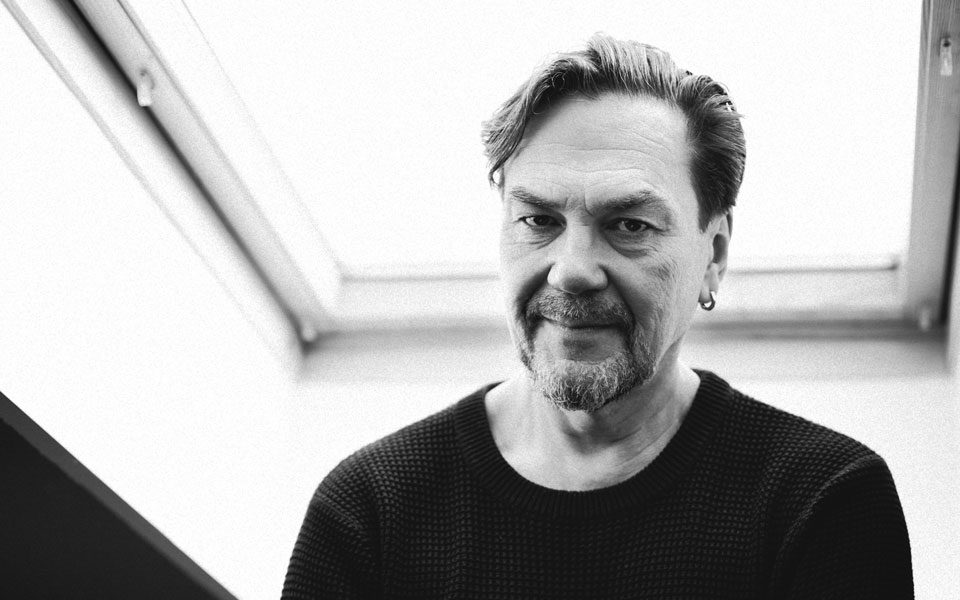
The sixth German–Ukrainian meeting of writers belonging to the Paperbridge Circle took place on 10–11 September in the form of the Paperbridge Circle 2020 telebridge between Ivano-Frankivsk and Berlin.
The conversation with the writer Yuri Andrukhovych was devoted to a virtual tour of the old Jewish cemetery, which took place during the festival.
Iryna Slavinska: Please tell us about the Paperbridge festival, which was held for the first time under quarantine conditions.
Yuri Andrukhovych: On the days that the Paperbridge took place, there was a ban on mass events; we had prepared for this challenge in advance. Together with the organizers, we decided that everything would take place online. The German team would be assembled in Berlin, and the Ukrainian participants—in Ivano-Frankivsk. We would try to build this bridge digitally; a kind of digital bridge between Berlin and Frankivsk.
I don’t know whether it’s correct to call it a festival; it is better to call it a meeting, an encounter between writers and translators from two countries. The program always features one public event. This is a characteristic of festivality, but mostly these are discussions, mutual readings within a narrow circle, without announcements to the public. That is what makes this a unique event.
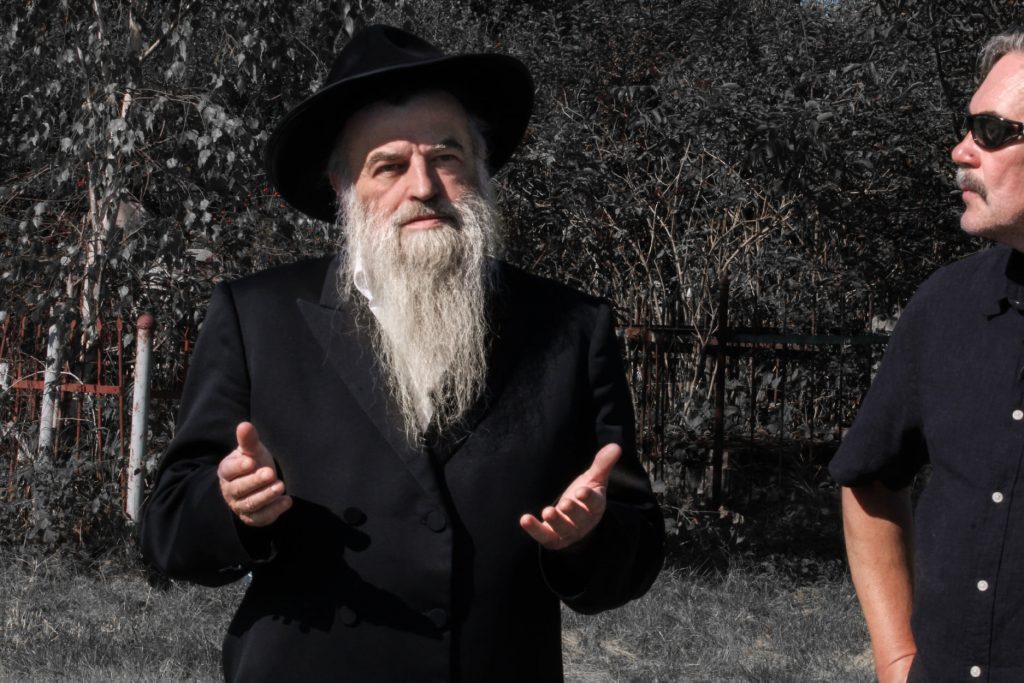
Iryna Slavinska: This year, the attention of viewers was attracted by a virtual tour of the Jewish cemetery in Ivano-Frankivsk, which you and Moshe Leib Kolesnik, chief rabbi of western Ukraine, conducted. How did this idea come about?
Yuri Andrukhovych: It was my idea, to be honest. In general, the format of the meeting envisages, besides gatherings and translators in their narrow circle—the above-mentioned large public event—activities aimed at getting to know the city and its topoi, in which the Paperbridge Circle is taking place this time. In general, the organizers planned two such tours: two in Berlin and two in Frankivsk. One of them was an author tour led by Taras Prokhasko, who showed the city through his personal perception. Since the Holocaust theme, the theme of the historical tragedy and its memory, or, rather, memorylessness or forgetting, was one of the key themes of our meeting this year. Accordingly, our program featured excerpts from Sofia’s [the writer Sofia Andrukhovych—Ed.] novel Amadoka, and we had a lecture by the historian Liuba Solovka about the Holocaust in the city of Stanyslaviv, as well as an excerpt from my novel Lovers of Justice, about the period of the Nazi occupation. It was completely logical to visit the scene of this Holocaust, the place where the mass, systematic destruction of the Jewish population unfolded. Here, of course, I had to request the assistance of Moshe Leib Kolesnik, who was born in Stanyslaviv. For me, his agreement was a wonderful, pleasant gift; he is a bright, wise person, extraordinarily sociable and knowledgeable. He is the bearer of this culture and memory. That is how these factors came together, and our tour took place.
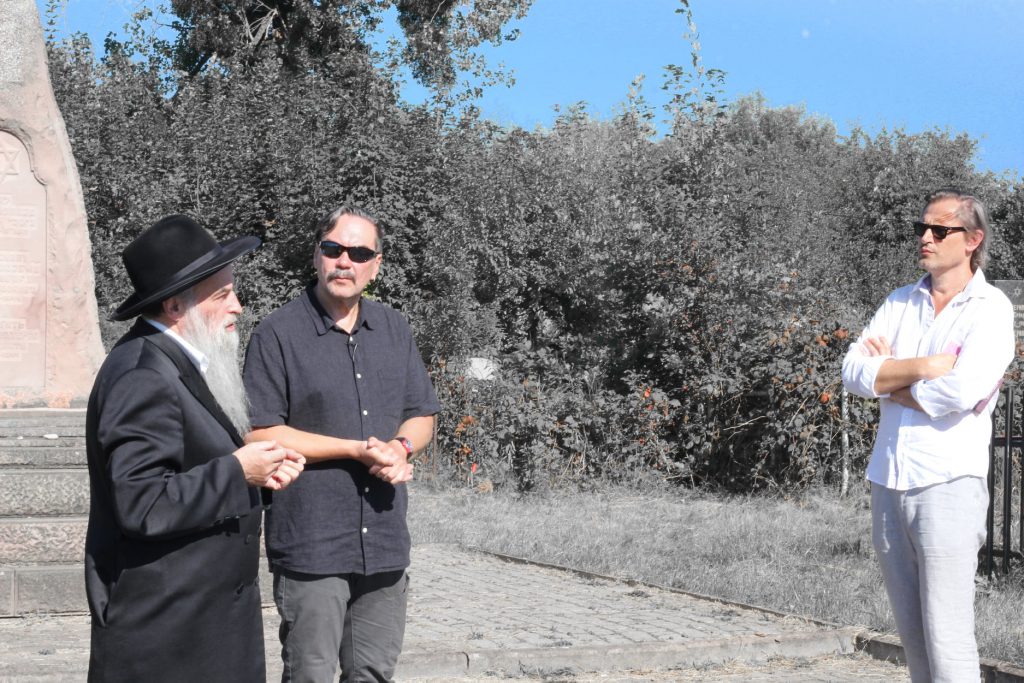
Iryna Slavinska: Could you tell people who have never been in Ivano-Frankivsk what kind of space this is, the Jewish cemetery?
Yuri Andrukhovych: This space is quite far from the historic center; that is why not every tourist visits it. The cemetery is new in fact. The old Jewish cemetery is actually quite close to the historic center; I wrote about it in Lovers of Justice. In the early 1960s, the Kosmos cinema was built on this spot. During the first two decades of the twentieth century, the Jewish community stopped burying its dead in this cemetery. In 1926 it began functioning as the cemetery that we visited. There was a certain logic governing the choice of this particular place because in fact, it was adjacent to the first private Jewish-owned houses. The cemetery functioned in this mode for fifteen years, until 1941, when these horrors began on 12 October 1941.
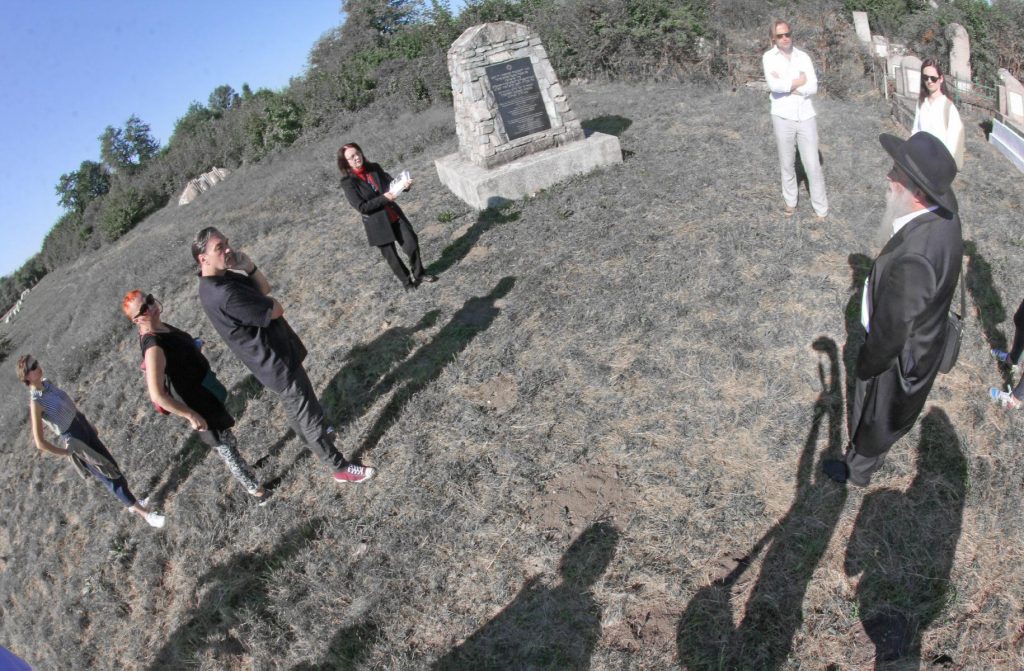
Iryna Slavinska: Is this place singled out today, marked as a former cemetery?
Yuri Andrukhovych: Through the efforts of Moshe Leib Kolesnik and his community as well as a substantial number of Jews from various countries around the world, quite a lot was done on this site in the early 1990s. First and foremost, its boundaries were established and demarcated by a stone wall. The other issue was that private homes begin right beyond this perimeter, and close by is a recreation area with an artificial lake that was created in the 1950s. This triggered my suspicion that, in creating this recreation area with its lake and boats, the Soviet authorities wanted to retouch the tragic nature of the nearby site. My assumption that the shootings by the German occupiers took place at the site where the lake is located today was not confirmed.
When the war ended, and people from the more easterly regions and oblasts of Ukraine and other republics of the Soviet Union began to settle here, there were a lot of Jews among them. They were different Jews; they continued to bury their people in this cemetery for several decades. It cannot be said that the Holocaust, mass shootings, and executions took place on this site and that it was overgrown with the grass of oblivion. There is quite a specific history of this site, and they stopped burying people there sometime in the late 1970s.
Iryna Slavinska: It would be interesting to continue the topic of retouching the past. Like in Ivano-Frankivsk, where there is a movie theater on the site of the old cemetery and a park or artificial lake next to the new cemetery. In many Ukrainian cities, open-air dance floors, parks, and movie theaters were built where old Jewish cemeteries were once located.
Yuri Andrukhovych: And gravestones were used as building material for foundations. For example, when the Lenin statue was torn down in the city of Kolomyia in 1990, it turned out that it had been standing on top of Jewish tombstones.
Similarly, matzevahs [Jewish tombstones in the form of a vertical stone pillar—Ed.] were used in the masonry of the Kosmos movie theater; I write about this in my novel. The first version of the movie theater was unsuccessful, and one night the unfinished structure suddenly collapsed. City residents began saying that God was punishing this vandalism, this predatory attitude to the past and to peoples’ lives.
There are many examples of such cynicism. The closest analogy is the synagogue in Frankivsk, which began functioning as a Jewish temple in 1990. During Soviet rule, this entire building was transferred to the then medical institute; the assembly hall was located there.
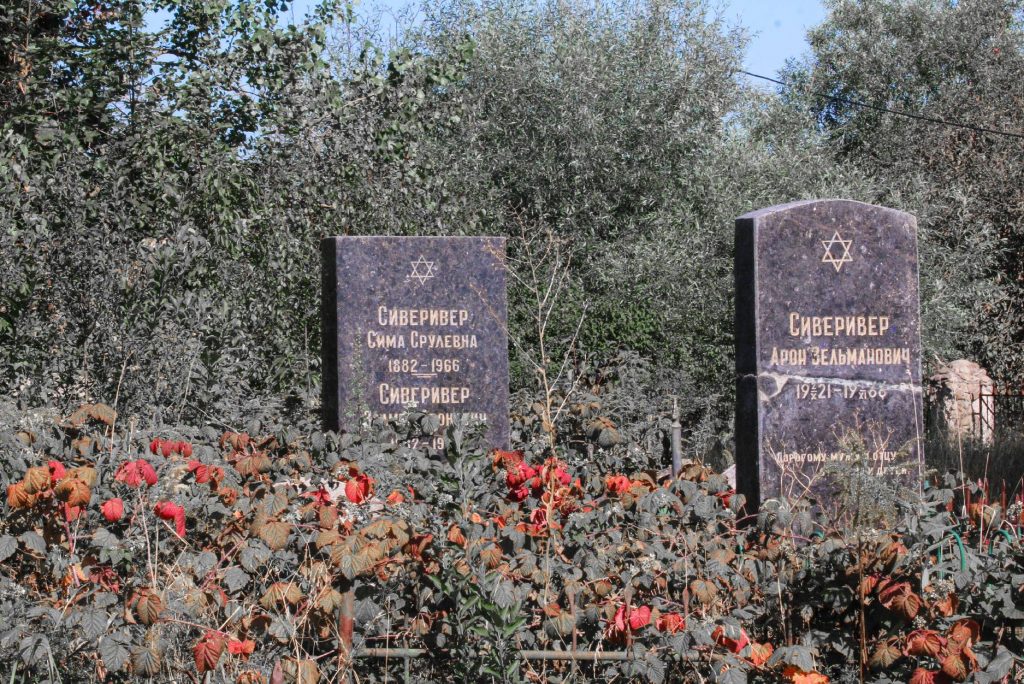
Iryna Slavinska: Are there any discernible traces today in Ivano-Frankivsk of the Jews of Stanyslaviv?
Yuri Andrukhovych: I think that this is not enough, although there are traces, of course. You have to understand when you see them. You have to look intently and have some kind of prior information. At the same time, the situation is significantly better than during the late Soviet period. In fact, these positive processes of learning about our past began together with independence, when people began speaking more openly about this. During the Soviet period, a commemorative stele was erected at the cemetery, but it bore a text that has now been corrected. It stated that on this site in 1941–1943, the German fascist invaders shot approximately 120,000 Soviet citizens as well as POWs from other countries. There were no prisoners of war there at all, and those Soviet citizens were exclusively Jews, but this was not said out loud.
This has been corrected, as of today, there are a few more commemorative markers. That Soviet monument is still there. I think it is absolutely correct that, in visiting this place, we observe a certain evolution, how our knowledge and our experience concerning these events are changing for the better. I think it is particularly important that this need has arisen among the younger generations. These are people who are not closing themselves off from the past, like their parents or grandparents, people who want to locate the sources, and to get to the bottom of things. International research projects are emerging, including both archival and archaeological research. I understand that we are terribly far from some kind of tolerable situation in this regard. The level of neglect and disrepair is extraordinarily awful, and in fact, everything positive that is happening in this regard is a tiny handful of initiatives undertaken by enthusiasts alone. It’s a good thing that they exist; maybe they will develop, and this will be corrected.
Iryna Slavinska: Can we say that attention to the topic of preserving memory and increasing the visibility of those communities that, as a result of the Soviet government and the Holocaust, are no longer visible in Ukrainian cities, has begun to increase in recent years? I remember once speaking with [the poet] Mariana Kiyanovska and she expressed the opinion that after 2013 and 2014, the EuroMaidan had an influence on Ukrainians to be more willing to “see others.”
Yuri Andrukhovych: I agree with her. I think that in general we have become much more open because we have understood how much solidarity means, and how much responsibility means. Without exaggeration, 2013–14 was a historical milestone. I think that the fact that Ukrainians got an opportunity to have greater contact with the Western world, with European cities, is also inevitably playing a positive role. Today of course we are in a situation where visa-free entry has stopped, and once again we cannot travel so easily and freely, like a year ago. But before the pandemic, we got the chance to see how others deal with this, how others not only nurture this memory, but also glean definite, and entirely palpable effects from this. I think that all this plays a part.
Photographs from the Paperbridge Circle 2020 page on Facebook was used in the podcast.
This program is created with the support of Ukrainian Jewish Encounter (UJE), a Canadian charitable non-profit organization.
Originally appeared in Ukrainian (Hromadske Radio podcast) here.
Translated from the Ukrainian by Marta D. Olynyk.
Edited by Peter Bejger.
NOTE: UJE does not necessarily endorse opinions expressed in articles and other materials published on its website and social media pages. Such materials are posted to promote discussion related to Ukrainian-Jewish interactions and relations. The website and social media pages will be places of information that reflect varied viewpoints.



















